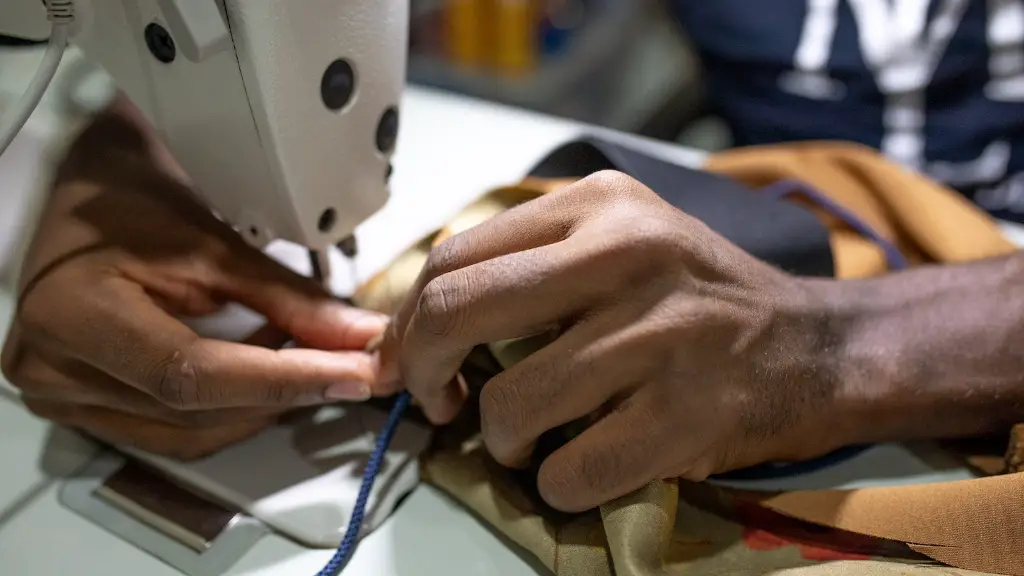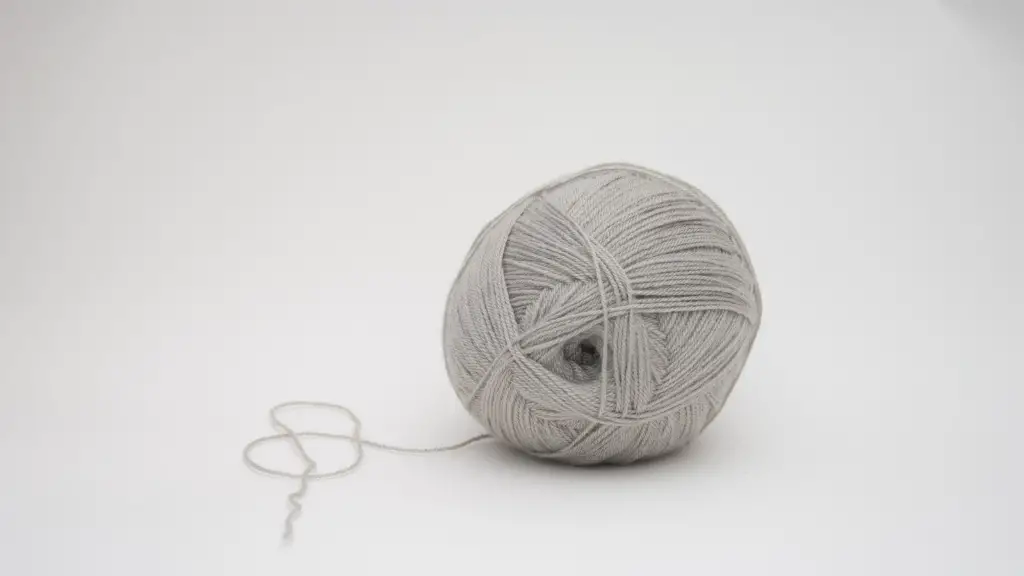Picking out the perfect sewing pattern can be a little daunting, especially if you’re a beginner. But don’t worry, we’re here to help! Here are a few things to keep in mind when choosing a sewing pattern:
– First, consider what you want to make. Do you want to sew a dress, a shirt, pants, or a skirt?
– Once you know what you want to make, take a look at your measurements. Make sure to measure your bust, waist, and hips (for women) or your chest and waist (for men) before you start shopping for patterns.
– Once you have your measurements, you can start looking for patterns. Most patterns will have sizing information listed on the back of the envelope. Find a pattern that matches your measurements, or choose a size that is slightly larger if you’re not sure.
– Finally, pick a pattern that you feel comfortable sewing. If you’re a beginner, look for patterns that are rated “easy” or ” beginner-friendly.” And don’t forget to have fun!
There is no one definitive answer to this question. It depends on your personal preferences, available time and resources, and the complexity of the project you are undertaking. You may want to consider looking online or in sewing magazines for inspiration. You can also ask friends or family who sew for their recommendations. Once you’ve selected a few patterns you like, read the descriptions carefully to make sure you are choosing the correct size and have the required skill level. With a little planning and research, you’ll be able to find the perfect sewing pattern for your next project!
How do I know what size sewing pattern I need?
There’s no one-size-fits-all answer to this question, as the best way to pick the right size for a sewing pattern will vary depending on the individual and the specific garment. However, some tips that may be helpful include:
-Taking measurements of yourself and comparing them to the size chart included with the pattern
-Asking a friend or family member for their opinion on what size would be best
-Looking at online reviews of the pattern to see if others have had success with a certain size
-Making a muslin (or test version) of the garment in a few different sizes to see which one fits best
There are a few things to consider when choosing a sewing pattern as a beginner. First, you’ll want to make sure the pattern has easy to follow instructions. Second, it’s helpful to choose a pattern that is a quick and simple sew. Third, look for a pattern that is a well-drafted, wardrobe staple. Here are five great sewing patterns for beginners:
1. Tilly and the Buttons – Cleo
2. Grainline Studios – Scout Tee
3. Leisl & Co – Everyday Skirt
4. Tilly And The Buttons – Coco
5. Sew Over It – The Ultimate Shift Dress
What are the big 4 sewing patterns
There are two main types of sewing patterns – indie/independent patterns and big four patterns. The big four pattern companies are Vogue, McCalls, Butterick and Simplicity. Indie patterns are usually designed by smaller, independent companies or individual designers. They often have a more unique or quirky style than the big four patterns.
Out
So what I want to do is I usually come here and I find my medium And this is the line that IMore
How do you tell if a pattern will fit?
First check the difference between your bust measurement and the high bust measurement. If you have a small difference, you probably have a cup size that is too large. You can try going down a cup size. If you have a large difference, you may have a cup size that is too small. You can try going up a cup size.
To create a symmetrical design, it is necessary to first fold the top fabric so that the pattern matches up with the bottom fabric underneath. This will ensure that the design is not only aesthetically pleasing but also balanced.
Can you learn pattern making on your own?
There’s no need to be scared of math, it’s not as difficult as it seems. With a little bit of effort, anyone can learn how to make patterns. Just be patient and take your time. Soon enough, you’ll be able to see the patterns in everything!
McCall’s ‘Learn to Sew for Fun’ patterns are designed for the complete beginner, with easy to follow instructions and basic sewing tips. These patterns are perfect for those who want to learn how to sew, or for those who simply want to sew something fun and easy.
What clothes should a beginner sew
If you’re looking to start sewing clothes, skirts are a great beginner project. But, avoid patterns that require zippers, facings and a slim fit. These can be more difficult for those just starting out. Instead, look for patterns that are simple and easy to follow.
There is something about classic patterns that make a room feel more sophisticated and stylish. Whether it’s a damask, stripe, or plaid, these timeless designs add a touch of elegance to any space. While trendy prints may be popular for a season or two, they eventually go out of style. Stick with classic patterns to ensure your home always looks chic.
What are the 3 principles of pattern making?
The three main principles of hair design are dart manipulation, added fullness, and contouring. Dart manipulation is the process of creating shapes in the hair by manipulating the direction of the hair. Added fullness is the process of adding volume to the hair to create a fuller look. Contouring is the process of creating shadows and highlights in the hair to add depth and dimension.
There are a few popular sewing pattern companies that have embraced the zero waste movement and released lines of patterns specifically designed to minimize fabric waste. Some of the most popular designers include Birgitta Helmersson, Jalie, Madalynne, Megan Nielsen, Named, Sew Love, and Sewing Patterns by Masin.
What is the easiest design pattern
A singleton is a creational design pattern that allows for only one instance of a class to be created, with that one instance providing access to the class for all other code. The singleton design pattern is one of the most controversial patterns in software engineering, with many developers believing that overuse of the pattern is a sign of poor code architecture. However, when used strategically, the singleton pattern can be a tried and true solution to many commonly occurring scenarios.
If you’re looking to cut patterns in record time, there are a few tips you can follow to make the process go more smoothly. Firstly, consider using pattern weights instead of pins to keep your fabric in place. Secondly, use a rotary cutter to make quick, clean cuts. Thirdly, be sure to overlap your main pieces and pocket piece so that the seam lines match up. Fourthly, if you’re cutting out multiple garments, try cutting two at once. And finally, cut large pieces first and then work your way down to smaller ones. By following these simple tips, you’ll be cutting patterns like a pro in no time!
Should you wash fabric before sewing?
Washing your fabric before you sew with it is always a good idea, but it is especially important with cotton fabrics. Cotton fabrics can shrink up to 10% when washed, so if you don’t wash your fabric before sewing, your final garment might not fit correctly.
Recognizing patterns can help us make better decisions, solve problems more effectively, and find new opportunities. To recognize patterns, we need to be actively looking for them, organizing the information we have, questioning the data, and visualizing it in new ways. By doing these things, we can start to see the world around us in a new light and find hidden possibilities.
Conclusion
There is no definitive answer to this question, as it depends on personal preferences and the specific project you have in mind. However, some tips on how to choose a sewing pattern may include considering the difficulty level of the project, finding a pattern that matches your measurements, and consulting with a friend or professional for advice. Additionally, it is often helpful to read reviews of patterns before making a final decision.
The most important factor to consider when choosing a sewing pattern is the intended use of the garment. For example, a pattern for a dress would be inappropriate for a pair of pants. Once you have considered the use, you can narrow your choices by looking at the silhouette, neckline, and other details of the pattern. Once you have a few patterns in mind, you can make a muslin to test the fit before cutting into your fabric.





